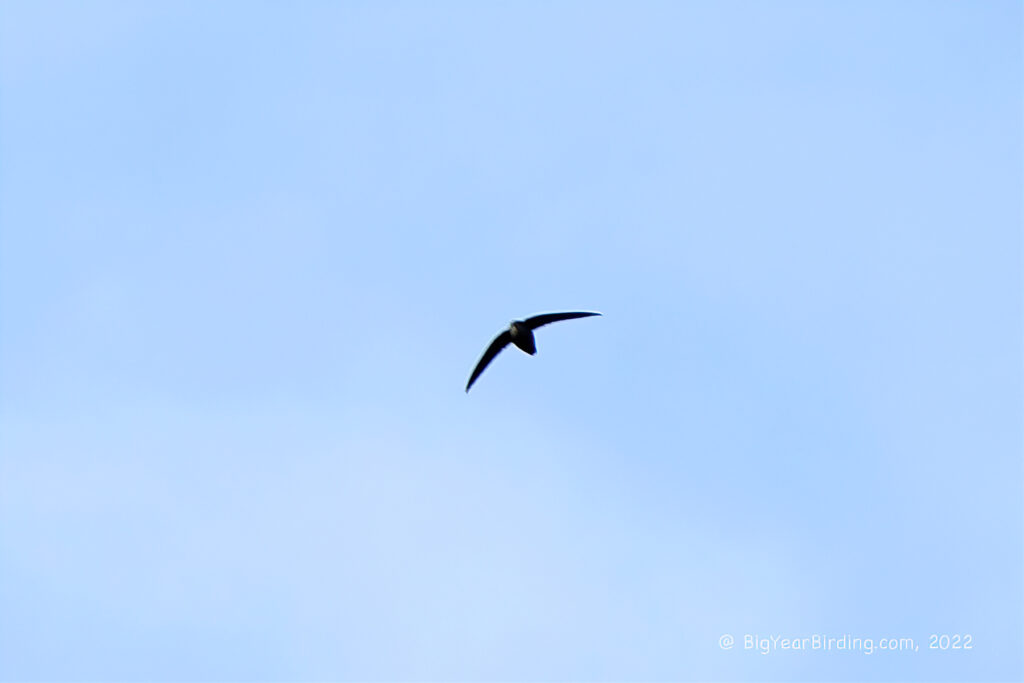
The Chimney Swift (Chaetura pelagica) is a small, aerial bird that belongs to the family Apodidae. It measures approximately 4.5 inches in length and has a wingspan of about 11 inches. The Chimney Swift is quite lightweight, weighing in at only 0.6 ounces, which enables it to perform impressive aerial maneuvers. These birds have a unique shape, with long, pointed wings and a short, stubby tail, and are easily identified in flight.

One of the most distinguishing field marks of the Chimney Swift is its dark, sooty-brown plumage. Its throat is slightly paler, and it has a small, dark bill that is well-suited for capturing insects in mid-air. The Chimney Swift has large, dark eyes and a small, round head that gives it a streamlined appearance. In flight, it appears to be in constant motion, flying in rapid, darting patterns while emitting a distinctive chattering sound.
Chimney Swifts are migratory birds that breed in eastern North America and winter in South America. They typically arrive in North America in early spring and can be seen in the skies throughout the summer months before departing in the fall. During migration, they form large flocks and fly long distances, sometimes traveling up to 500 miles in a single day. Chimney Swifts are highly adapted to life on the wing and spend almost all of their time in flight, with the exception of when they roost and nest.
Chimney Swifts are a unique species that has adapted to human structures for nesting. They build nests out of twigs and saliva, which they attach to the inside of chimneys, silos, and other tall structures. In fact, they are so adapted to nesting in chimneys that they have lost the ability to perch and can only cling to vertical surfaces. Unfortunately, as many homes are now equipped with capped chimneys, this has led to a decline in Chimney Swift populations.

Overall, the Chimney Swift is a fascinating and highly adapted bird species that is easily recognizable by its dark, sooty-brown plumage, distinctive flight patterns, and unique nesting behavior. Despite being small in size, these birds are impressive aerialists that can travel long distances in a single day during migration. It is important to protect and preserve Chimney Swift habitat, as these birds have become increasingly dependent on human-made structures for nesting.

